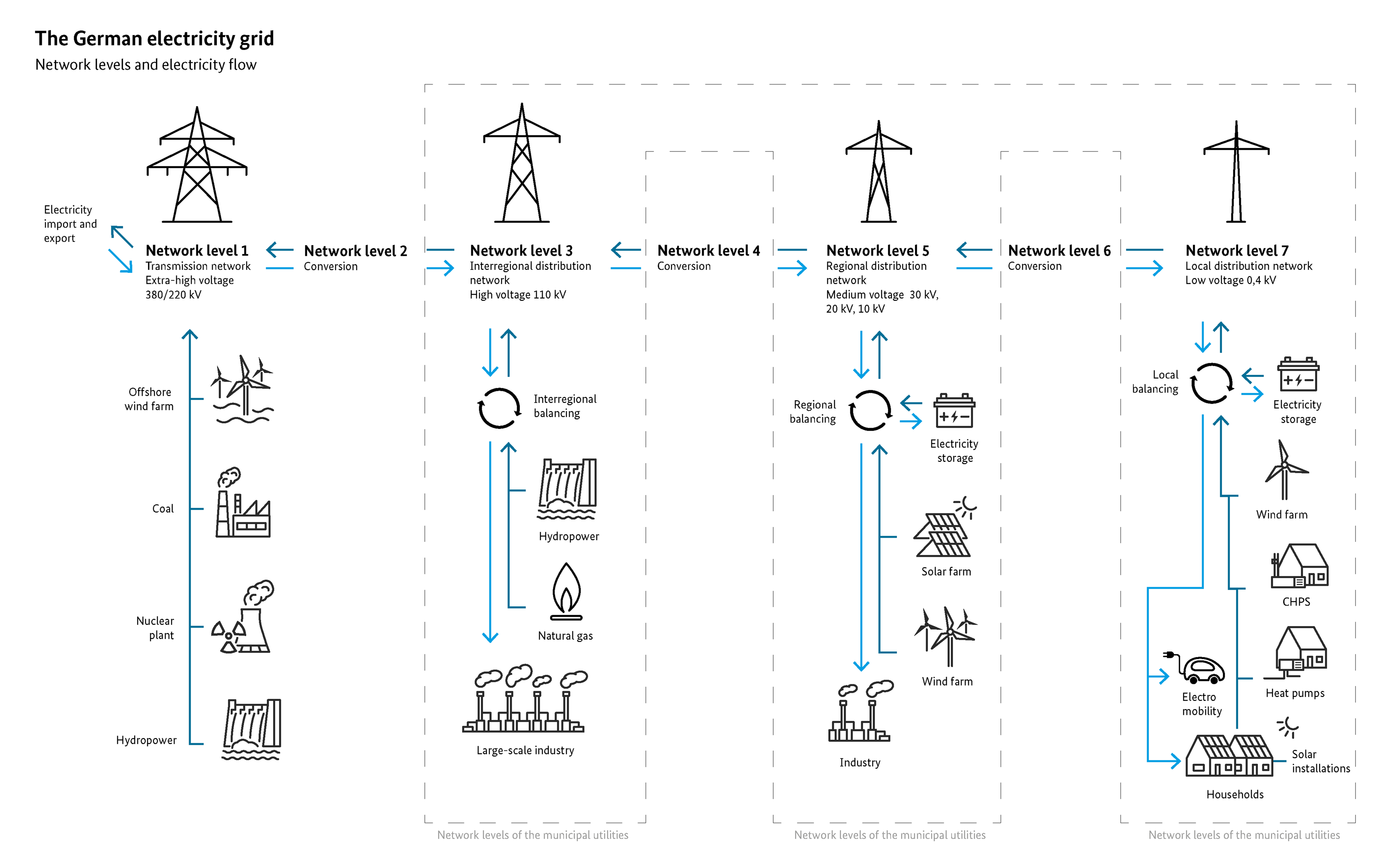Hint: This website is not optimized for your browser version.
Network levels
Different network levels with different voltages enable electricity to be transported efficiently.
There are four voltage levels in the German network: extra-high voltage, high voltage, medium voltage and low voltage. As its name says, the extra-high voltage network has the highest voltage of all, with 220-380 kV (kilovolts). Extra-high voltage lines run across the whole of Germany and transmit electricity over long distances from large-scale generators (such as large power plants and offshore wind farms) to downstream distribution networks. They also link Germany's electricity network with networks in neighbouring countries via cross-border interconnectors and subsea cables, enabling Cross-border electricity trade in Europe. The security and stability of the transmission networks in Germany is the responsibility of four Transmission system operators, each with their own Control area.
The high voltage network (110 kV) transports electricity from medium-sized generators to downstream networks and to large industrial consumers and Deutsche Bahn, for instance.
The medium voltage network (10-30 kV) delivers electricity from smaller generators to medium-sized and small towns and to medium-sized industrial consumers.
The low voltage network is the network to which households and smaller industrial consumers are connected. It is the lowest voltage level with 400 V (volts).
Germany's high voltage, medium voltage and low voltage networks are the responsibility of the distribution system operators, of which there are more than 800.
A map of the various transmission lines is available on the website of the European Network of Transmission system operators for Electricity (ENTSO-E) here.
